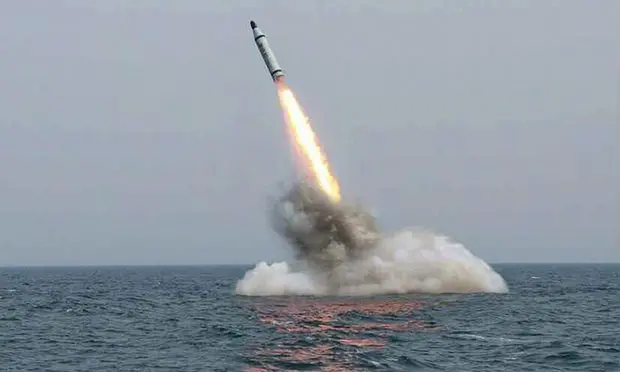The Democratic People's Republic of Korea (DPRK) on Friday attempted to launch what is believed to be Musudan mobile ballistic missile into its eastern waters early in the morning, but the attempt appeared to have failed, South Korea' s Joint Chiefs of Staff (JCS) said.
A JCS official told Xinhua on the phone that the DPRK tried to launch a missile from its eastern region at about 5:30 a.m. on Friday local time (2030 Thursday GMT) and the attempt was estimated to have failed.
The official declined to explain why Seoul estimated the launch was a failure. Another South Korean military official was quoted by Yonhap news agency as saying that the estimate was based on the flight of an abnormal trajectory.
The failed missile is believed to have been mobile Musudan missile, which is allegedly capable of striking parts of the U.S. territory such as Guam and the outer reaches of Alaska.
South Korea's military had dispatched an Aegis-equipped destroyer to the East Sea to detect and track the possible launch of Musudan missile at or around the so-called Day of the Sun.
The Day of the Sun is an annual public holiday in the DPRK that falls on April 15 to commemorate the birthday of Kim Il Sung, founder of the country and grandfather of current leader Kim Jong Un.
The DPRK had reportedly deployed one to two mobile Musudan missiles about three weeks earlier to its eastern Wonsan area.
If confirmed, it would mark the first time that Pyongyang test- fired Musudan missile, though unsuccessfully, and also the first time that the country launched ballistic missiles from a mobile launcher. Pyongyang is known to have deployed around 50 mobile Musudan missiles with a range of 3,000-4,000 km since 2007.
The DPRK has twice launched a three-stage rocket, which was condemned as a disguised test of ballistic missile technology, from a stationary launch pad. The two launches are believed to have been successful.
The latest long-range rocket launch from a fixed site was carried out on Feb. 7, about a month after Pyongyang detonated what it claimed was its first hydrogen bomb on Jan. 6, the fourth of its nuclear test.
Unlike the launch from a stationary site that can be detected by spy satellites as it takes time to prepare, mobile launches are very hard, in case of military conflicts, to spot as the mobile launchers can move to another position before shooting missiles.
From early March, the DPRK had fired a series of short- and medium-range missiles and multiple rocket launchers, heightening tensions on the Korean peninsula amid the ongoing annual war games between Seoul and Washington.
The latest was the launch of three rounds of surface-to-air short-range missiles two weeks earlier.
South Korea and the United States kicked off the Key Resolve command post exercise and the Foal Eagle field training exercise in early March. The former already ended last month, but the latter will last until later this month.
Pyongyang has denounced the spring U.S.-South Korea war games as a dress rehearsal for northward invasion.
South Korea's military has also closely monitored a possibility for the DPRK's fifth nuclear test since top DPRK leader Kim Jong Un gave orders on March 15 to test a nuclear warhead and ballistic rockets capable of carrying the warhead.
Pyongyang has claimed that it possessed a miniaturized nuclear warhead and mastered the technology of a re-entry vehicle, key to developing an intercontinental ballistic missile (ICBM).
Seoul's defense ministry has said that Pyongyang can conduct another nuclear test at any time when the leadership decides. Enditem
 简体中文
简体中文

